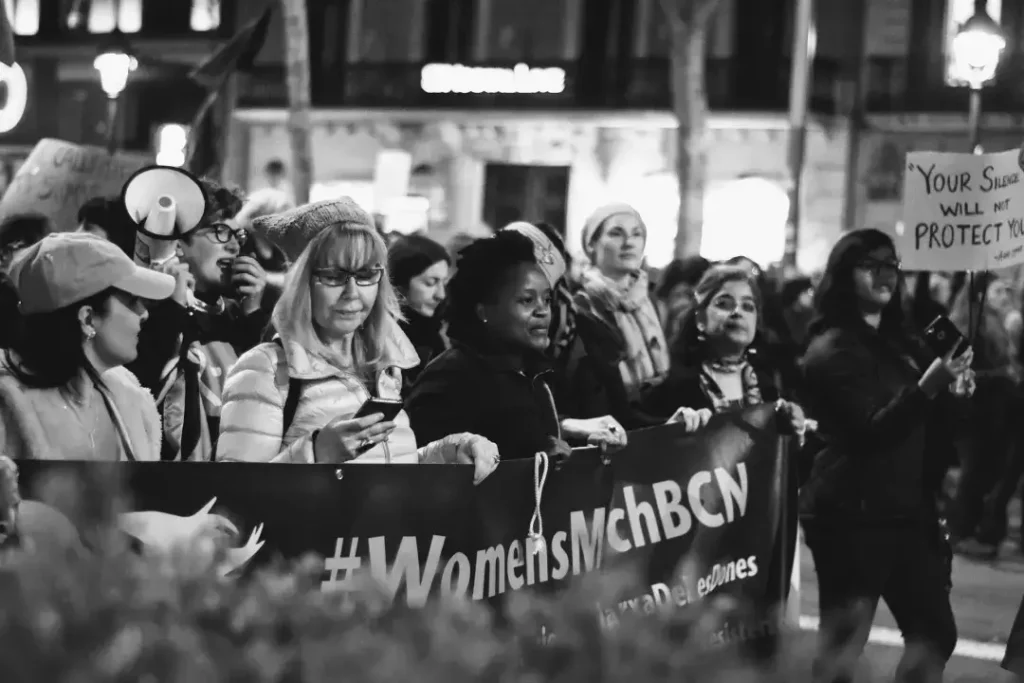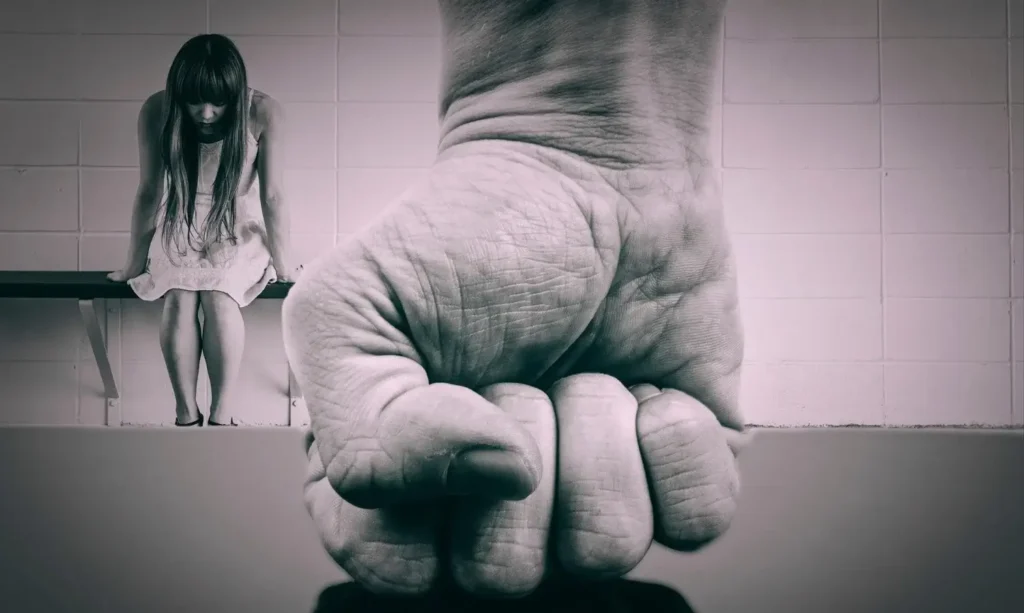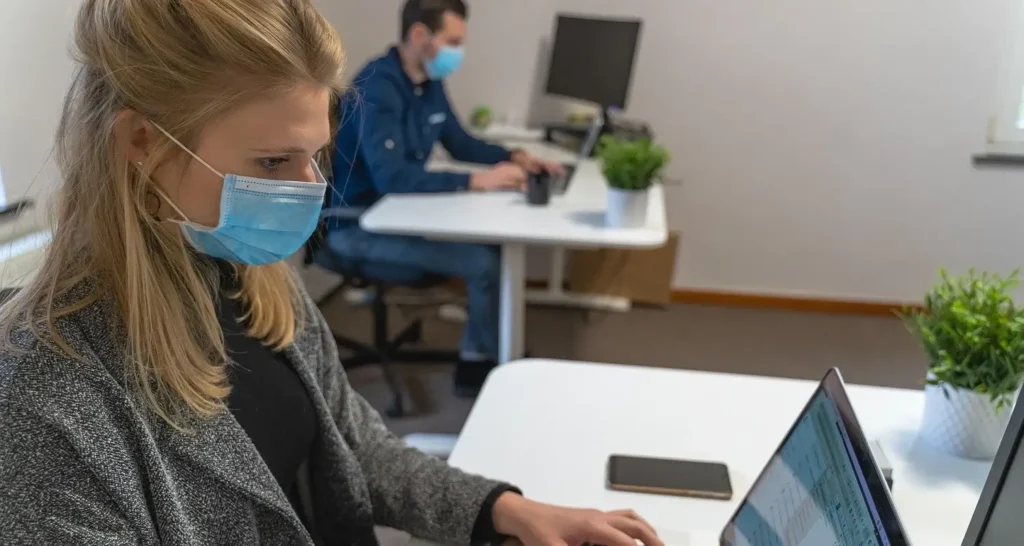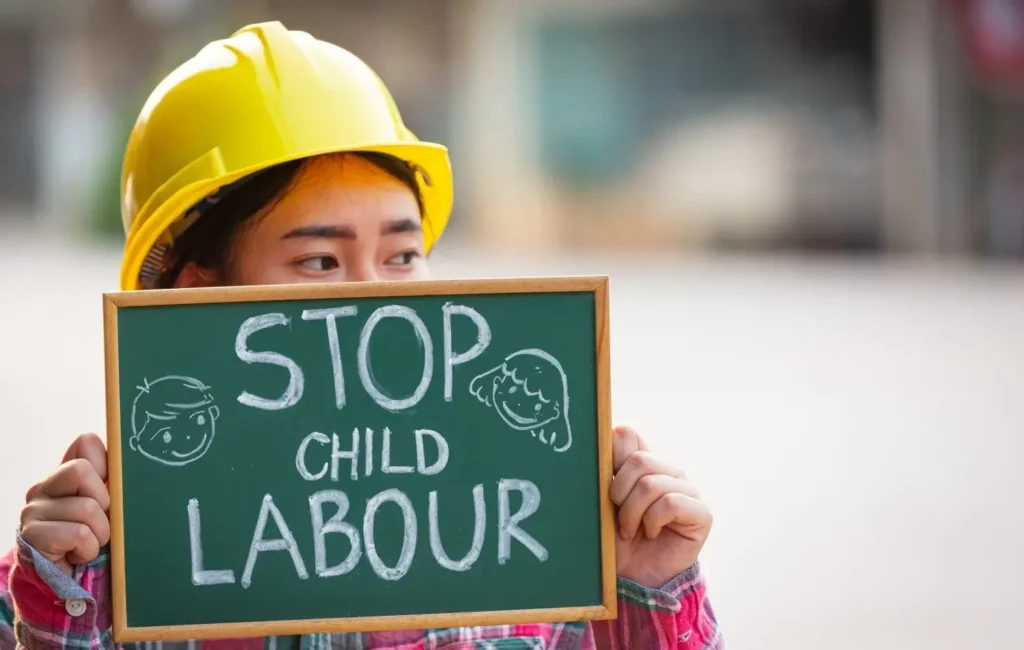Every moment, someone in the United States faces gender-based violence. The silence around these experiences affects many lives deeply. It leaves emotional scars that need legal recognition and protection.
Understanding gender-based violence laws is more than just knowing the laws. It’s about giving survivors back their dignity, safety, and hope.
Violence against women is a big social problem that needs strong legal solutions. These laws help stop abuse, support survivors, and punish the guilty. By learning about these laws, you can help make a difference.
The path through gender-based violence laws shows us big challenges and important steps to safer places. Your knowledge can help survivors and stop violence from happening again.
Key Takeaways
- Gender-based violence laws provide critical legal protections for survivors
- Legal frameworks aim to prevent, prosecute, and support victims of violence
- Understanding these laws empowers individuals and communities
- Comprehensive legislation addresses multiple dimensions of gender-based violence
- Legal resources play a critical role in survivor support and recovery
Table of Contents
Understanding the Scope of Gender-based Violence in America
Gender-based violence is a big problem in the United States. It affects millions of people in different communities. This issue includes many types of abuse that harm personal safety and society.
Domestic violence, intimate partner violence, and sexual violence are major challenges. They impact people and communities all over the country. Knowing about these issues helps us find better ways to prevent and support them.
Types of Violence Covered Under Current Legislation
- Physical assault within intimate relationships
- Sexual violence and harassment
- Psychological and emotional abuse
- Stalking and digital harassment
- Economic control and manipulation
Statistical Overview of Violence Cases
| Violence Type | Annual Incidents | Percentage of Population |
|---|---|---|
| Domestic Violence | 10 million | 25% |
| Intimate Partner Violence | 6.5 million | 15% |
| Sexual Violence | 4.3 million | 10% |
Impact on Communities and Society
Gender-based violence has wide-reaching effects. Economic costs, psychological trauma, and intergenerational cycles of abuse show how deeply it affects society.
Understanding these complex issues helps communities. They can create better support systems, legal protections, and prevention strategies. These efforts aim to address the root causes and help people heal.
Federal Laws Addressing Domestic and Intimate Partner Violence
The United States has created important federal laws to fight domestic violence and protect women’s rights. The Violence Against Women Act (VAWA) is a key law in this fight. It offers strong legal protections for survivors all over the country.
Key federal laws addressing domestic violence include:
- Violence Against Women Act (VAWA)
- Family Violence Prevention and Services Act
- Domestic Violence Victim Protection Act
- Federal Stalking Prevention Act
VAWA was first passed in 1994. It’s a major step in fighting domestic violence. It gives victims important help, like:
- Legal support and protection
- Financial assistance
- Counseling services
- Emergency shelter programs
Federal laws understand that domestic violence is complex. They protect against more than just physical harm. They also cover emotional, psychological, and economic abuse. This ensures survivors get all the help they need.
| Federal Law | Primary Protection | Year Established |
|---|---|---|
| VAWA | Comprehensive victim support | 1994 |
| Stalking Prevention Act | Protection from harassment | 2005 |
| Family Violence Prevention Act | Emergency services | 1984 |
Knowing these federal laws helps you understand your rights and how to get help in cases of domestic violence. Each law has its own way to support survivors and punish the abusers.
State-Level Legislation and Enforcement Mechanisms
Understanding gender-based violence laws is complex. Each state has its own way to protect victims and stop abuse. This creates a wide range of laws across the U.S.
State laws are key in fighting gender-based violence. Each place has its own plan to tackle this big issue. This shows how important local efforts are in stopping abuse.
Protection Order Variations Across States
Protection orders are a major tool against gender-based violence. States have different rules, including:
- How long protection lasts
- What kind of protection is offered
- How easy it is to get emergency orders
- What happens if someone breaks the order
Reporting Protocols and Legal Requirements
How victims report abuse varies by state. Important parts include:
- What documents are needed
- How private the reports can be
- Rules for who must report abuse
- How to get help and support
Law Enforcement Response Strategies
Police have special plans for dealing with gender-based violence. Good strategies focus on keeping victims safe, collecting evidence, and acting fast.
Training police and having special units can really help. It makes them better at helping victims of gender-based violence.
Knowing about these state differences helps people find the right legal help. It also helps them get the support they need in their area.
Legal Rights of Survivors and Victims

Knowing your legal rights is key when facing gender-based violence. Women’s rights offer strong protection to help survivors. The law has many ways to help you find justice and safety.
As a survivor, you have legal protections that protect your basic rights. These cover many areas:
- Right to file criminal charges
- Access to emergency medical services
- Protection from workplace discrimination
- Confidential support services
- Legal representation assistance
Gender equality is at the heart of these legal protections. Your rights include support for physical, emotional, and legal issues. Courts understand the complexity of violence and offer special legal help to survivors.
“The law stands as a shield for those who have experienced violence, ensuring their dignity and safety are foremost.” – National Women’s Legal Center
Legal protections cover important areas:
- Criminal justice interventions
- Civil litigation options
- Confidential victim support services
- Employment and housing anti-discrimination measures
Going through legal systems can be tough. Look for help from local victim advocacy groups. They can guide you through resources and legal options for your case.
Protection Orders and Their Implementation
Understanding legal tools is key to protecting yourself from domestic violence. Protection orders are vital for survivors. They help prevent further harm and set clear boundaries against abusers.
There are different types of protection orders. Each is designed to address various levels of risk. They offer specific safety measures for those affected by domestic violence.
Emergency Protection Orders
Emergency protection orders provide quick safety for those in danger. They can be obtained fast through courts or law enforcement. Key features include:
- Rapid issuance within 24-48 hours
- Temporary protection lasting 3-7 days
- Designed for urgent situations with high-risk
- No prior notification required to the alleged abuser
Long-term Restraining Orders
Long-term restraining orders offer more protection for survivors. They provide sustained safety measures compared to emergency orders.
| Order Type | Duration | Key Features |
|---|---|---|
| Temporary Restraining Order | Up to 3 weeks | Initial court-issued protection |
| Permanent Restraining Order | 1-5 years | Comprehensive legal protection |
Enforcement Across State Lines
The Violence Against Prevention Act makes protection orders enforceable nationwide. This ensures your safety, even if you move or travel. It offers broad support for survivors.
Knowing about these legal protections empowers you. It helps you take action against domestic violence. You can secure your safety through legal frameworks.
Gender-based Violence Prevention Programs and Legal Requirements

Stopping gender-based violence needs a big plan. This plan includes teaching, getting the community involved, and laws. Knowing about these programs can really help fight abuse and keep people safe.
Good ways to stop gender-based violence involve many steps. Schools, workplaces, and groups in the community are key. They help make programs that tackle the problem and support people.
- Implement mandatory training programs
- Develop clear reporting mechanisms
- Create supportive community networks
- Provide survivor support services
Laws for these programs are getting tougher. Places must now have strong plans that:
- Have clear anti-violence rules
- Give regular training to staff and students
- Have secret ways to report
- Help those who might be victims right away
| Prevention Program Type | Target Audience | Key Objectives |
|---|---|---|
| Workplace Training | Employees | Spot and stop workplace harassment |
| Campus Safety Programs | Students | Lessen sexual violence and help survivors |
| Community Awareness | General Public | Teach about stopping gender-based violence |
Working together is key to making real change and cutting down gender-based violence in our areas. By supporting these programs, you help make a safer, more caring place for all.
Workplace Protection Laws and Employer Obligations
Workplace safety is key to gender equality and women’s rights. Employers must make sure the workplace is safe and supportive. They need to protect employees from gender-based violence and harassment.
Safety Measures in the Workplace
To keep the workplace safe, employers need strong safety plans. They should:
- Make clear anti-harassment policies
- Offer regular safety training
- Set up secret ways to report issues
- Give quick help to those affected
Employee Rights and Accommodations
Employees have many rights under federal and state laws. These include:
- Protection from unfair treatment
- Reasonable work adjustments
- Confidential support services
- Legal action for workplace wrongs
Reporting Mechanisms
Knowing how to report issues is vital for safety. Important steps are:
| Reporting Step | Action Required |
|---|---|
| Documentation | Write down incidents in detail |
| Internal Reporting | Tell HR or the safety officer |
| External Resources | Call legal help if needed |
Workplace protection is a team effort. Employers and employees must work together. This ensures a safe, respectful place that supports gender equality and women’s rights.
Immigration Laws and Gender-based Violence Protections
Survivors of violence against women face tough challenges with immigration laws. The U.S. has special laws to help immigrant survivors of gender-based violence. These laws make sure immigration status doesn’t stop people from getting help and safety.
There are important immigration protections for survivors of gender-based violence:
- U-Visas for crime victims who assist law enforcement
- T-Visas for survivors of human trafficking
- VAWA self-petitions for domestic violence survivors
The Violence Against Women Act (VAWA) offers big help for immigrant survivors. It lets them get legal status on their own, away from their abusers. This way, they can find safety without worrying about deportation or losing their immigration status.
These immigration protections bring many benefits:
- Legal status for survivors
- Protection from deportation
- Access to work authorization
- Chance to build a safe, independent life
Immigrant survivors can get these protections through special application processes. These processes focus on their safety and well-being. Each option needs paperwork and working with legal authorities. But, they offer a vital lifeline for those facing violence in immigrant communities.
Legal Resources and Support Services for Survivors
Surviving intimate partner violence or sexual violence is tough. But, there are many resources to help. These services aim to support survivors on their healing path.
Survivors of gender-based violence can find many support options. These include:
- Legal guidance and representation
- Emotional counseling services
- Financial assistance programs
- Safe housing arrangements
Government Assistance Programs
The U.S. government has programs for survivors of intimate partner violence. These programs help in many ways, such as:
- Victim compensation funds
- Emergency financial assistance
- Healthcare support
- Legal advocacy services
Non-Profit Legal Aid Organizations
Many non-profits offer free or low-cost legal help for sexual violence survivors. These groups provide detailed legal support. They help victims understand their rights and deal with legal systems.
Advocacy Groups and Support Networks
Community support networks are key for survivors. They offer:
- Peer support groups
- Counseling resources
- Safety planning assistance
- Ongoing emotional support
“You are not alone. Support is available, and healing is possible.”
By using these resources, survivors can find the strength to move forward. They can start to rebuild their lives after violence.
Recent Legislative Changes and Proposed Reforms
The world of gender equality and women’s rights is changing fast. New laws are being made to help protect people and fix old problems. Knowing about these changes can help you fight for better laws.
Important updates have happened in many areas of women’s rights:
- Expanded definitions of domestic violence
- Enhanced workplace protection mechanisms
- Increased funding for survivor support services
- Stronger interstate enforcement of protection orders
States like California and New York are leading the way with new laws. They want to help survivors more by:
- Making it easier to report abuse
- Lowering legal hurdles for victims
- Offering better financial help
At the federal level, new laws are being suggested to fix gaps in protection. These laws aim to make the legal system better for everyone, focusing on the real issues of gender-based violence.
“Legal reforms are essential in creating systemic change and protecting fundamental women’s rights.” – National Women’s Law Center
Staying informed about these changes can help push for more equality and rights for women in the U.S.
Conclusion
Learning about gender-based violence laws is key to making communities safer in the U.S. Your involvement can turn legal words into real protection for those at risk. By understanding abuse prevention, you help bring about change.
The laws on gender-based violence are always changing. This shows our society’s dedication to protecting rights and helping survivors. Every new law, protection order, and support service helps people heal and grow stronger.
It’s important to know about gender-based violence, believe survivors, and support strong laws. Educational efforts, community awareness, and solid legal systems work together to fight violence. By standing up for what’s right and getting involved, you help build a safer world.
Even though we’ve made progress, there’s more work to do. Your efforts and the efforts of others can make a big difference. Together, we can ensure that everyone is safe from gender-based violence.
FAQ
What is considered gender-based violence under U.S. law?
Gender-based violence includes abuse like domestic violence, sexual assault, and stalking. It’s about physical, sexual, and emotional harm. Laws at the federal and state levels protect those who have been abused.
How can I obtain a protection order?
To get a protection order, start by filing a petition at your local court. You’ll need to show proof of abuse and fill out forms. Courts often have help for victims, and some places offer emergency orders for quick safety.
What protections does the Violence Against Women Act (VAWA) provide?
VAWA helps survivors of abuse with legal aid and support. It also helps immigrants who have been abused. The law funds programs and grants to fight violence against women.
Are protection orders enforceable across different states?
Yes, protection orders are valid everywhere in the U.S. thanks to the Full Faith and Credit provision. This means a protection order from one state is enforceable in any other state or U.S. territory.
What rights do survivors have in the workplace?
Survivors have the right to work safely. This includes changes in work schedule and protection from discrimination. Employers must not retaliate against employees who are experiencing abuse.
How can immigrant survivors of gender-based violence get legal protection?
Immigrant survivors can apply for U-visas or T-visas. They can also use VAWA self-petitioning. These options help survivors stay in the U.S. and get support.
What should I do if I’m experiencing gender-based violence?
First, focus on your safety. Call the police, reach out to a hotline, and document any abuse. Get medical help if needed and talk to local support services. Think about a safety plan and legal options.
Are there free legal resources for survivors?
Yes, many groups offer free or low-cost legal help. The National Domestic Violence Hotline and local bar associations can guide you. State-funded programs also provide support.
How do reporting mechanisms work for gender-based violence?
You can report abuse to the police, campus security, or HR. Many places offer confidential ways to report. They also support you through the legal process to keep you safe.
What prevention programs exist to address gender-based violence?
There are many programs to prevent abuse. These include education in schools and workplaces, community campaigns, and counseling. There’s also training on bystander intervention and addressing gender inequality.










